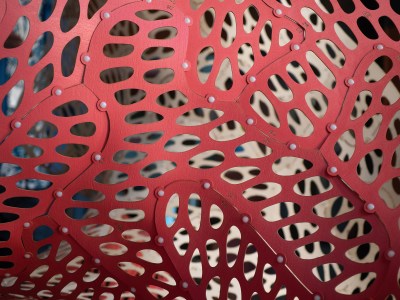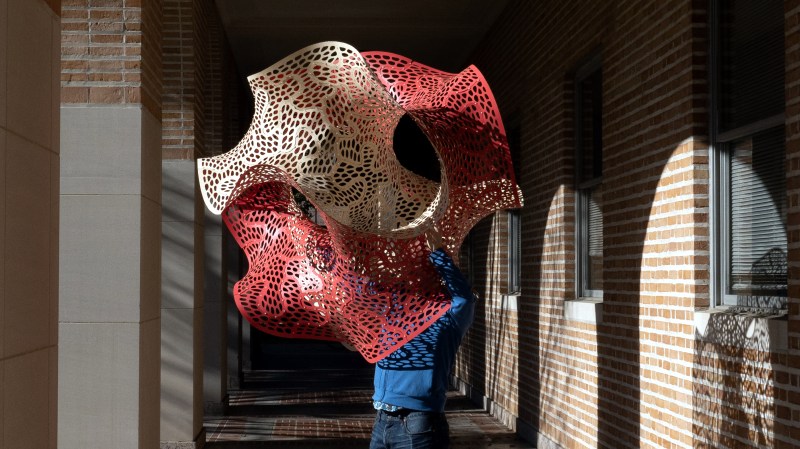
The sculpture shown here is called Puzzle Cell Complex and was created by [Nervous System] as an art piece intended to be collaboratively constructed by conference attendees. The sculpture consists of sixty-nine unique flat panel pieces, each made from wood, which are then connected together without the need for tools by using plastic rivets. Everything fits into a suitcase and assembly documentation is a single page of simple instructions. The result is the wonderfully-curved gyroid pattern you see here.
The sculpture has numerous layers of design, not the least of which was determining how to make such an organically-curved shape using only flat panels. The five-foot assembled sculpture has a compelling shape, which results from the sixty-nine individual panels and how they fit together. These individual panel shapes have each been designed using a technique called variational surface cutting to minimize distortion, resulting in their meandering, puzzle-piece-like outlines. Each panel also has its own unique pattern of cutouts within itself, which makes the panels lighter and easier to bend without sacrificing strength. The short video embedded below shows the finished sculpture in all its glory.
We’ve always been delighted with the things [Nervous System] puts out, and you can read about how they built a business around generative design, and how they even had their own custom plywood made so that laser cutting their unique puzzles was more reliable. That last one is a good example of a proper engineering solution to a practical problem. When one has gone as far as possible with off-the-shelf items, it’s time to get something properly engineered to do exactly what’s needed.
















The sculpture consists of sixty-nine unique flat panel pieces
Nice
This is pretty awesome.
I’ve had a project I couldn’t create for years due to trying to find a way to wrap a 2D traditional Japanese pattern called sayagata to a sphere, to 3d model a lattice structural lantern based off if this.
It looks like some of the math used for this might help me finally find a way to do this.
Even if it doesn’t work, this is mathematically quite interesting. Definitely reading this.